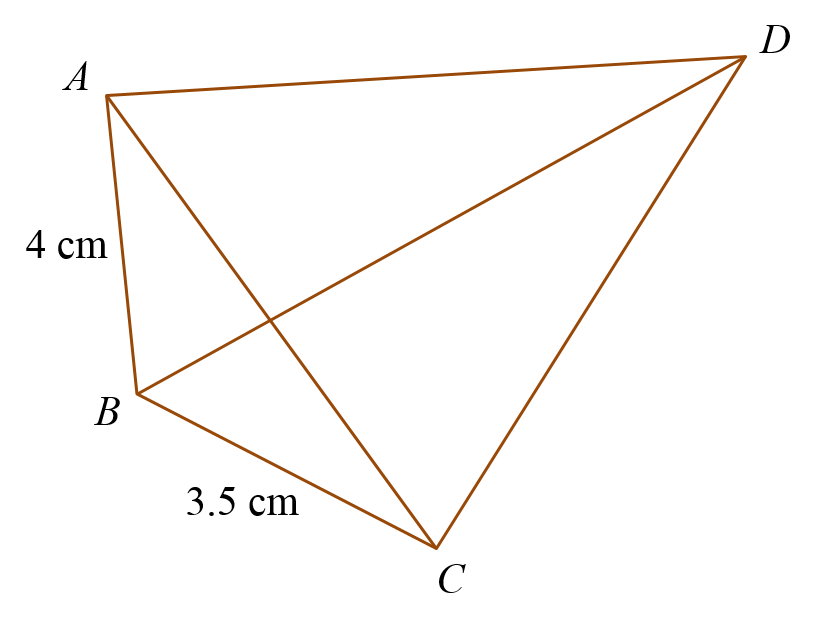Question 13:
Solution by scale drawing is not accepted.
Diagram 6 shows a quadrilateral ABCD such that AC and BD are straight lines.
 Diagram 6
Diagram 6
It is given that the area of ∆ABC = 6 cm2 and ∠ABC is obtuse.
(a) Find
(i) ∠ABC,
(ii) the length, in cm, of AC,
(iii) ∠BAC [7 marks]
(b) Given BD = 7.3 cm and ∠BCD = 90°, calculate the area in cm2, of ∆ACD. [3 marks]
Solution:
(a)(i)
(a)(ii)
(a)(iii)
(b)
Solution by scale drawing is not accepted.
Diagram 6 shows a quadrilateral ABCD such that AC and BD are straight lines.
 Diagram 6
Diagram 6It is given that the area of ∆ABC = 6 cm2 and ∠ABC is obtuse.
(a) Find
(i) ∠ABC,
(ii) the length, in cm, of AC,
(iii) ∠BAC [7 marks]
(b) Given BD = 7.3 cm and ∠BCD = 90°, calculate the area in cm2, of ∆ACD. [3 marks]
Solution:
(a)(i)
(a)(ii)
(a)(iii)
(b)